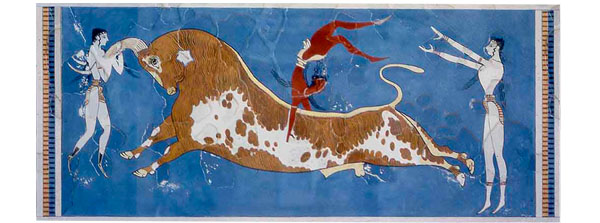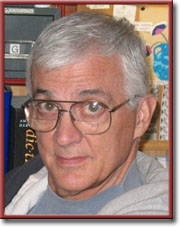A Wing-Walker’s Belief: Space Faith

Skip the B.S.
By Skip Eisiminger

“My aunt Clarice, a proponent of keeping the faith (to oneself), was the first woman in the state of Georgia granted a pilot’s license. I was unaware of this distinction until my cousin told me of it at her mother’s funeral. And while Clarice bestrode no canvas wings in flight, she would take a whiz off a running board at 40 MPH on a country road. Whether in her Model T or her father’s biplane, her first rule was, ‘Never release a secure handhold until grasping another.’ According to my cousin, her mother had known too many barnstormers who’d ‘bought the farm.’”—By Skip Eisiminger
“Water’s in Pisces,/astronomers say,/but are swordfish there/to duel with and weigh?”—The Wordspinner
“My faith’s in the flame/that sparked the Big Bang/from which earth, air,/and water all sprang.”—The Wordspinner
 CLEMSON South Carolina—(Weekly Hubris)—5/5/2014—In the beginning, there was no time nor space, and all matter was compressed in a particle smaller than this period [.] Nearly fourteen billion years later, the end of time and space is not foreseen through the most powerful lenses humans have yet polished, and the finite number of quarks we inherited are endlessly recycled in billions of star forges across the multiverse. Indeed, I’m something of a forge myself; we all are. Every breath I take contains several nitrogen atoms that sustained my parents, grandparents, great grandparents, et cetera ad infinitum.
CLEMSON South Carolina—(Weekly Hubris)—5/5/2014—In the beginning, there was no time nor space, and all matter was compressed in a particle smaller than this period [.] Nearly fourteen billion years later, the end of time and space is not foreseen through the most powerful lenses humans have yet polished, and the finite number of quarks we inherited are endlessly recycled in billions of star forges across the multiverse. Indeed, I’m something of a forge myself; we all are. Every breath I take contains several nitrogen atoms that sustained my parents, grandparents, great grandparents, et cetera ad infinitum.

My aunt Clarice, a proponent of keeping the faith (to oneself), was the first woman in the state of Georgia granted a pilot’s license. I was unaware of this distinction until my cousin told me of it at her mother’s funeral. And while Clarice bestrode no canvas wings in flight, she would take a whiz off a running board at 40 MPH on a country road. Whether in her Model T or her father’s biplane, her first rule was, “Never release a secure handhold until grasping another.” According to my cousin, her mother had known too many barnstormers who’d “bought the farm.”
Of course, gravity at any remove can be brutal, pulling off careless wing-walkers as nonchalantly as one might flick an ant into the sink. Chuck Yeager used to say that test pilots like himself were just “Spam in a can,” but the same could be said for every creature within the “can” of Earth’s atmosphere. Our planet’s poignant vulnerability was illustrated by a picture that one of the Voyager space crafts took as it passed Pluto, 35 years after leaving Earth. This stalwart robot with a small library of music and pictures of its home is on its way to a nearby star system. It’s scheduled to arrive in 40,000 years. The photograph, one of my favorites, shows a point of milky-blue light against a flat-black void. The milky-blue point, smaller than a pin’s head, contains all that any of us have ever loved.
But if Earth is obscured by Neil Armstrong’s thumbnail at the end of an arm stretched toward home, that same nail on Earth may block a quarter of a million galaxies from his view. The next time you’re outdoors, notice that the sun also may be obscured by the end of your thumb held at arm’s length. I do that occasionally as a reminder of the 99.9 percent of matter in our solar system which is located there even after five billion years of burning but with five billion years of fuel remaining. This disproportion of resources means that Earth once had to compete with Jupiter and Saturn, each a thousand times our size, for the remaining 0.1 percent of the rocky debris planets are made of.
Compounding the disproportion, astrophysicists have told us that all we see with our eyes and telescopes is but 4 percent of the universe because the lion’s share is veiled in dark energy and dark matter. But without the gravitation that dark matter provides, the galaxies would fly apart like shrapnel from a grenade, and without dark energy, parts of the universe would not be accelerating at close to light speed.

Feeling somewhat marginalized by these observations, I remind myself of T.S. Eliot’s paradox, “In the end is my beginning.” This Anglo-Catholic placed his faith in two singular nouns, but science has shown there will be a plurality of deaths and births. Thus, when a body is deconstructed by man or nature, it leaves behind enough iron, among a handful of other elements, for a microscopic nail. And when this nail, should the iron be remade into one, rusts back to earth, nature’s forge has millions of uses for its iron atoms, which are for all practical purposes immortal (1035 years, to be more precise) like the rest of the atoms that comprise a body and the multiverse.
Given my purposeful future, I have left instructions for my ashes to be spread in our children’s flower gardens. “Watch for me in the spring,” I say in these instructions. “Should you choose to wear me on your breast, draw me into your lungs, Dear, one last time or as long as the fragrance shall last.”
If some of these ashes happen to drift into the vegetable garden, it is comforting to think that the spines of my great grandchildren may be stiffened by my legacy. Wallace Stevens thought “the final belief is in a fiction,” but is it a fiction when we see through Hubble’s eye, stars and planets endlessly reproduced in cosmic factories?
In the 1960s, when the discovery of black holes was announced, promiscuously spiritual folk like myself shuddered. Light divided by zero, we thought, is zero. But a decade later, Stephen Hawking said he’d rethought the matter and decided black holes and the matter contained therein are not locked in darkness. Thanks to escaping radiation, there will be countless roles for these atoms to play. Hawking, an early proponent of eternal darkness, had learned Theodore Roethke’s lesson, “You learn by going where you have to go.”

In Ralph Waldo Emerson’s poem “Hamatreya,” he urges his farming neighbors to give up their piddling illusions of ownership because he has heard the Earth Mother “laugh[ing] in flowers.” If Emerson were alive today, he might urge the owners to take a tourist space flight to acquire what astronaut Edgar Mitchell called “instant global consciousness.” Mitchell was referring to the radical but mostly positive psychological transformations that all twelve of the lunar astronauts experienced after witnessing Earth suspended in a vacuum, as appealing and helpless as an infant orphan.
Samuel Coleridge and William James championed “a willing suspension of disbelief” with regard to literature and theology respectively for a fuller appreciation of what these two genres have to offer. But the beauty of “space faith” is that we can see the astral hatcheries in action; thus, no leap of Kierkegaardian faith is required. Though science raises more questions with every answer it supplies, disbelief is no longer an option. We even know what the vacuum of space smells like: hot metal and fried steak. And if one adds a dash of space dust, it smells of raspberries and rum. The prospect is both heady and delicious.

I began this space odyssey with a family story, and I’ll conclude with one. My wife’s mother tried her best to learn English after her only daughter married an American soldier and moved five thousand miles away. However, impeded by age and Alzheimer’s, the only English sentence our mum ever mastered was, “I hope.” Knowing this, I often twisted the conversation in German in such a way that she could have the last words in English.
“Mutti, are your raspberry vines healthy?”
“I hope.”
“Would you like to visit America again?”
“I hope.”
“Is your new medicine any better than the old?”
“I hope.”
She always smiled shyly when she used her English but, modest as it was, it’s all she really needed. She died hopeful and unafraid. We hope.

Note: The image of a black hole reproduced here derives from http://www.wired.com/2014/01/brief-history-of-black-holes/
Also of great interest to readers of Skip Eisiminger: The author’s latest book, a collection of his Weekly Hubris (among many other) essays, Letters to the Grandchildren, has just been released by Clemson University Digital Press. To order copies, contact: Center for Electronic and Digital Publishing, Strode Tower, Box 340522, Clemson SC 29634-0522 (also, an order form is available online at http://www.clemson.edu/cedp/cudp).
3 Comments
Ted Balk
Thank you, Skip. If we do not begin listening, like Emerson, to our Earth Mother our species will go the way of other failed species, while our planet breathes a sigh of relief at ridding itself of an irritating itch. The idea of “Space Faith,” and that “disbelief is no longer an option,” remind me of Neil Tyson’s statement to Bill Maher: “The good thing about science is that it’s true whether or not you believe in it.”
I hope.
Ted
Elizabeth Boleman-Herring
Given the choice between a wing and a prayer, I’ll always take the wing (Buffalo or other). Thank you for this, Skip! Bestest, e
Skip
If we could only buy stock in science. The dividends are fantastic and guaranteed.